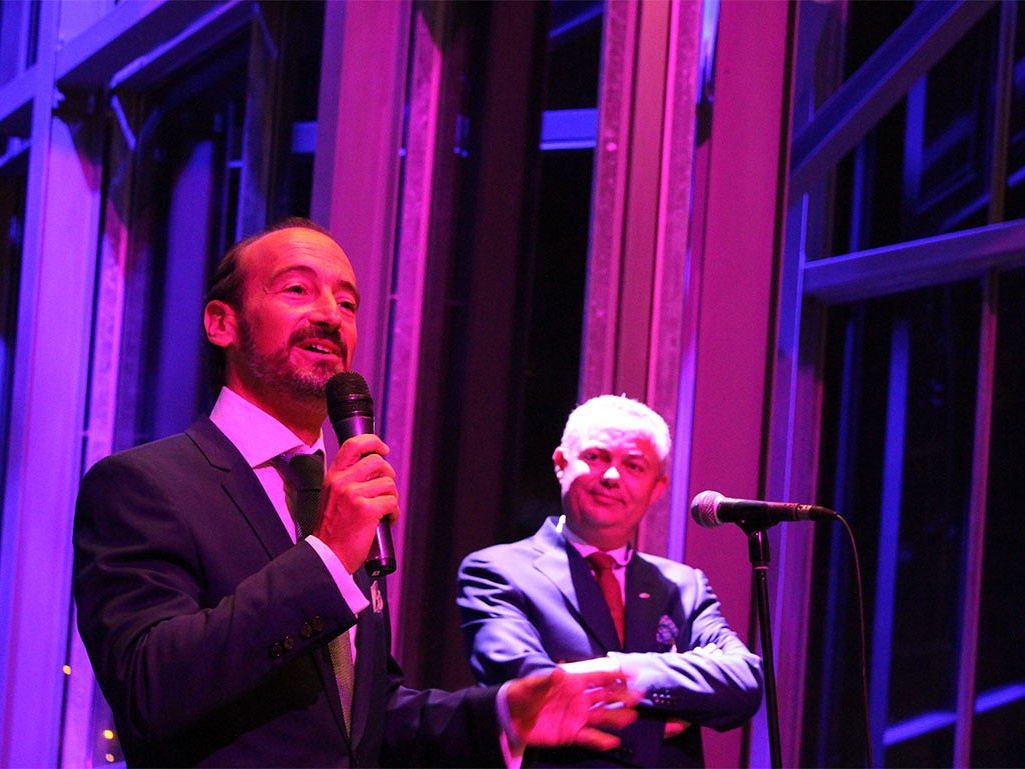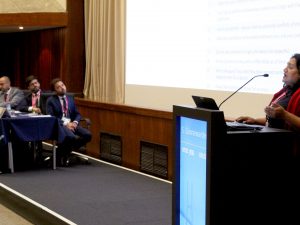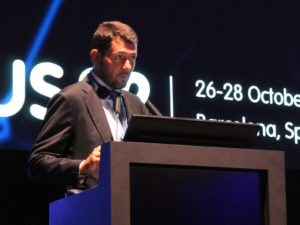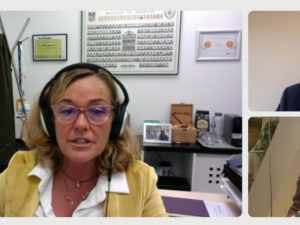On the third and final day of ERUS15 in Bilbao, we look back at a successful meeting with the Head of the Local Organising Committee, Dr. José Pereira Arias. “The meeting has been a great success so far. With live surgery there are always some surprises but we can deal with them and give the audience an engaging scientific programme.”
The second day of Live Surgery Sessions featured a selection of different procedures, including a robot-assisted sacrocolpopexy by Dr. Geert de Naeyer (Belgium) and robotic cystectomy and lymphadenectomy by Prof. Joan Palou (Spain). In the afternoon, audiences could follow along with more RARPs, a prostate tumorectomy, intracorporeal neobladder and a robotic renal transplantation.
Dr. Pereira Arias provided a glimpse behind the curtain of the long-term planning involved. “It’s not always easy, with two institutions involved. But I’ve enjoyed working as a team: organizing meetings like this is a challenge for us but we love robotic urology and the ERUS meetings so we were well-motivated. Five years ago it was already clear that Bilbao would be hosting, and we began preparations. We needed to bring hospitals and surgeons together, find the right patients, procedures and faculty.”
Patient Selection
Patient selection has its own challenges, particularly in the month of September, when a lot of people are on holidays. “As you can imagine, it’s difficult to ask a patient in July to wait until September for surgery. However, when we explain that their surgery will be part of a congress and a gifted surgeon will be operating, they are agreeable.”
“You also need two patients per case, just in case one patient has a fever or is otherwise indisposed. After the meeting is over, we will be operating on the “stand-by” patients as soon as possible, some already on Friday!”
Assembling the faculty for the meeting was a lengthy process as well. Pereira Arias: “Once you decide the scientific programme, you start inviting people. Some are friends, but some you don’t know personally and then it’s gratifying when they accept. We’ve prepared a video for the closing remarks, because it’s not easy to thank everyone. The nurses, the technical people behind the scenes all worked extremely hard towards this success. And naturally, we have to our sponsors, it would be impossible without them.”
Robotic surgery and Bilbao
It’s not just the world-class cuisine and architecture that drew ERUS to Bilbao: within Spain, Bilbao was the second site for surgical robots, after the Puigvert Foundation in Barcelona. Pereira: “Since 2006, we’ve been pioneering robotic surgery, and we’ve been mentoring surgeons in the rest of the country. The “robotic family” has been growing steadily, with now 26 robots in clinical use across Spain. Six of those robots are in Bilbao, servicing 2.5 million people. This is a high concentration compared to other regions in Spain.”
“It was time for ERUS to come to Spain. Everyone knows London and Paris, so we’re happy to host them in Bilbao. People are enjoying the city, though the weather is not ideal. The city’s changed a lot in the past decades with industry and pollution making way for new architecture like the Guggenheim Museum and this very congress centre. We’re a small city, but with big ideas!”





